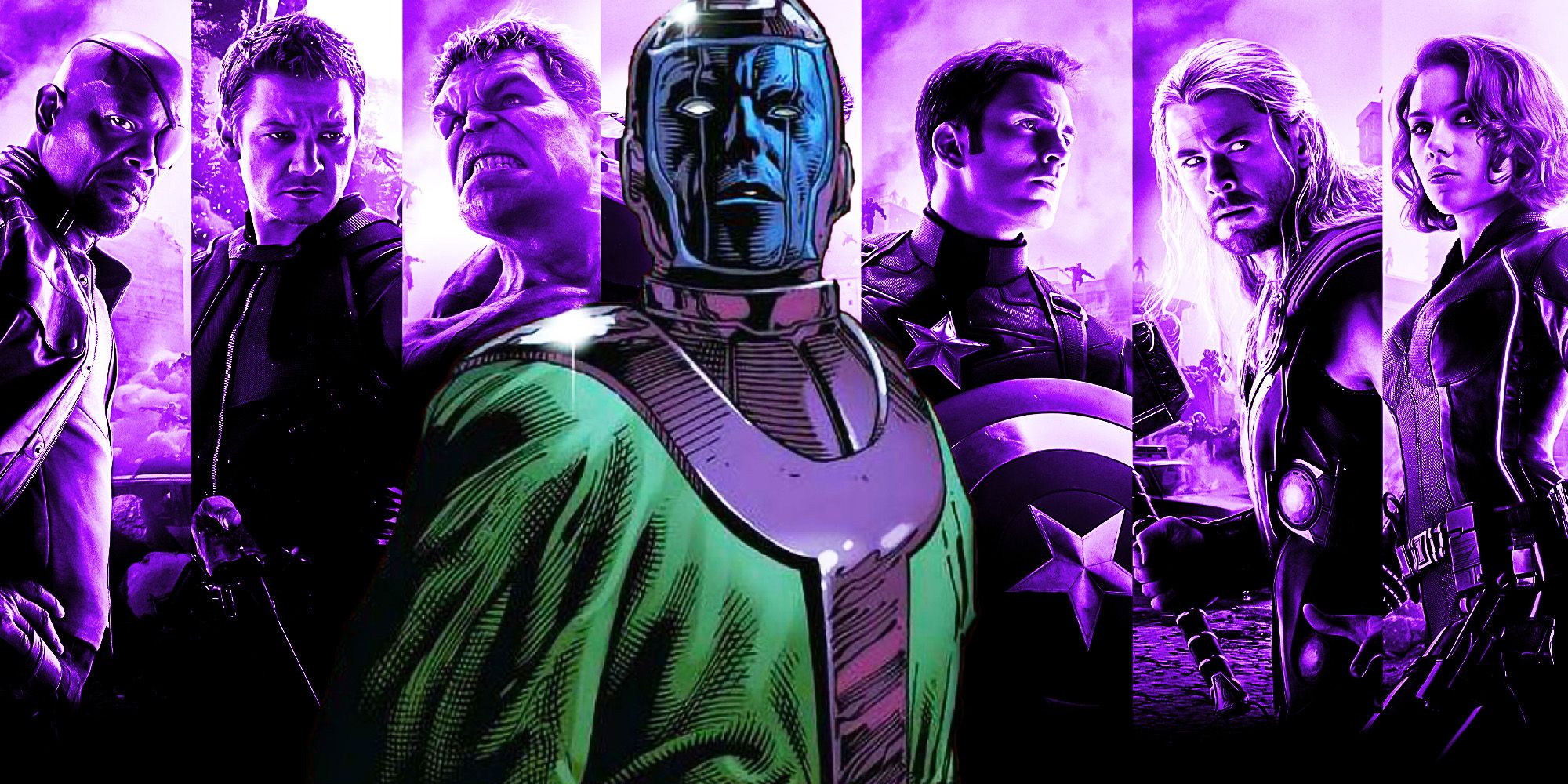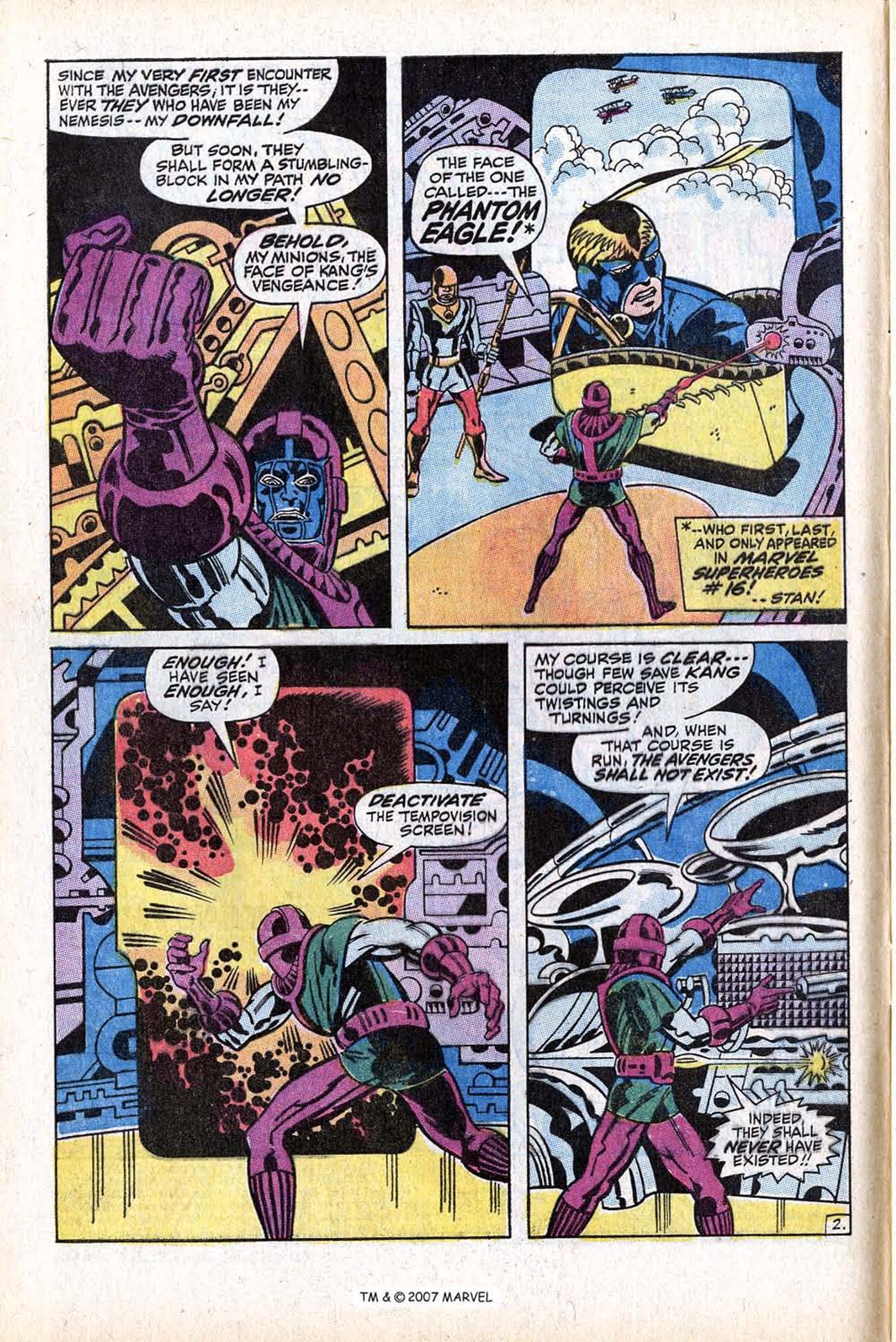Marvel Comics fans know that the Avengers originally formed to stop the rampage of the Hulk, but very few know that the actual, secret origins of the group go way back in time before that. Kang the Conqueror, with his superior knowledge of the past, proved that the real "first Avenger" is neither Captain America, nor Thor, nor Iron Man, but one obscure Marvel hero who only appeared in a handful of stories.
In the Marvel Cinematic Universe, the title of "First Avenger" goes to Captain America, as the original Super-Soldier project later inspired Nick Fury to create his team of heroes. In the comics, however, Captain America joined the group a little after it was created (in the milestone Avengers #4, by Stan Lee and Jack Kirby). The founding members of the Avengers are Thor, Iron Man, Giant-Man, and Wasp, who answered a distress call by Rick Jones regarding a rampaging Hulk (who was actually being manipulated by Loki). The Green Goliath also joined the group at the end of the story, albeit very briefly. While Marvel has hinted that Mjolnir is actually the first Avenger, this only applies to an Avengers team from the distant past. The title of "first Avenger", then, does not make much sense in the comics, unless one considers Hulk - or more accurately, Loki - because without him, the Avengers would have never assembled. This idea led Kang, the time-traveling adventurer, to hatch a convoluted plan to get rid of the Avengers forever.
In The Incredible Hulk vol. 1 #135, by Roy Thomas and Herb Trimpe, Kang sends Hulk back in time in an attempt to erase the Avengers from history. The idea is to prevent Karl Kaufman, the Phantom Eagle - a costumed airplane pilot who fought during World War I and appeared in literally one comic issue prior to this Hulk story - from destroying an experimental German super-weapon. This weapon would have killed an untold number of French soldiers, including Bruce Banner's grandfather. In this way, Hulk would never exist and the Avengers would never be brought together by the Jade Giant's rampage. Kang tricks Hulk into thinking that this plan will help him get rid of Bruce Banner forever, but in the end, Hulk accidentally destroys the weapon himself, so his future, and that of the Avengers, are safe.
This story is a classic example of how convoluted and wacky Marvel stories of the late Silver Age could be. If Kang wanted to prevent the formation of the Avengers, he could have found a much easier way, for example, preventing the gamma bomb incident that turned Bruce Banner into the Hulk. However, Kang has an almost-unmatched understanding of all time and space, and he used it to pick this singular moment as the most effective to attack the Avengers, which confirms, regardless of how unlikely Kang's plan looks, that the Phantom Eagle's mission was necessary for the formation of the Earth's Mightiest Heroes. This story is also an interesting early example of how dangerous time travel can be in comic book stories, as back then Marvel still stuck to the idea that changing the past would also alter the future, creating potential paradoxes. The current consensus is that any alteration to the past creates a new timeline that branches out from the "main timeline", protected by Immortus, a future version of Kang himself.
The Phantom Eagle might be an obscure character, but he deserves all the credit possible (and, perhaps, the title of "First Avenger") for risking his life in a dangerous mission that gave the planet its most stalwart defenders, the Avengers.


